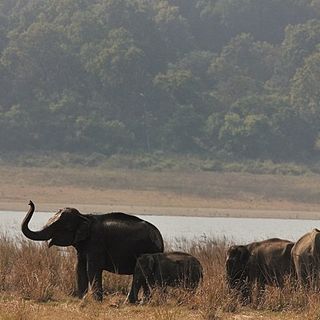Three rare, small wildcat species indigenous to the Indian subcontinent are endangered due to inadequate protection of their habitats, a new study has found.
Published in Scientific Reports, the study has found that the fishing cat, the leopard cat, and the rusty-spotted cat are currently threatened. All three of these wildcat species are endemic to the subcontinent comprising India, Sri Lanka, Nepal, Bangladesh, Pakistan, Bhutan, and the Maldives.
The fishing cat, listed as “vulnerable” by the International Union for Conservation of Nature (IUCN) on its Red List, which serves as a critical indicator of the health of the world’s biodiversity. The species inhabits mangrove swamps and coastal wetlands, which are presently threatened due to climate change. The rusty-spotted cat is listed as “near threatened” on the IUCN Red List with its habitat, the deciduous forests of India and Sri Lanka, increasingly destroyed for agriculture.
The leopard cat, which is more tolerant of deforestation and habitat alteration than other wildcat species, has relatively steadier populations. While its habitat ranges from shrub-land and low-lying forests to mountainous areas — the former makes it prone to being hunted, and the the latter is beginning to develop higher temperatures than this species can withstand.
Related on The Swaddle:
Whales, Dolphins Could Become Extinct ‘Within Our Lifetimes,’ Scientists Warn
“Some of these species … are extremely rare and probably need protection for long-term survival. The fact that only a very small proportion of the most suitable habitat for this species is protected is a warning sign that the protected-area network in the Indian subcontinent needs to be reviewed… To ensure we don’t lose them it’s essential to create more protected areas,” the study’s lead author, André P. Silva, from the department of ecology and genetics at Uppsala University, said in his statement to the press.
At present, only 6 to 11% of the areas inhabited by the three species are protected. In order to prevent their extinction, the researchers have suggested protection and management programs urgently expand to include larger areas habitable by and accessible to the species. “…the number and size of the protected areas must be increased to include more biotopes containing these species,” recommended Mats Björklund, a professor of zoo-ecology at Uppsala University.
Despite the Indian subcontinent being home to well over a third of the world’s wildcat species, one of the biggest challenges to implementing measures safeguarding their survival is the lack of knowledge about them. The present study has attempted to address that by extensively researching ecological factors — such as climate, land cover, and land use — that restrict or favor the occurrence of these species in nature, in order to aid future conservation measures.
“This study is important because it shows that many small, rare, and elusive cats in the Indian subcontinent don’t get as much attention as the more spectacular big cats. Nevertheless, the need to protect them is just as pressing,” Björklund noted.




